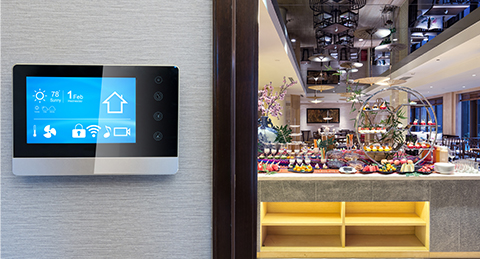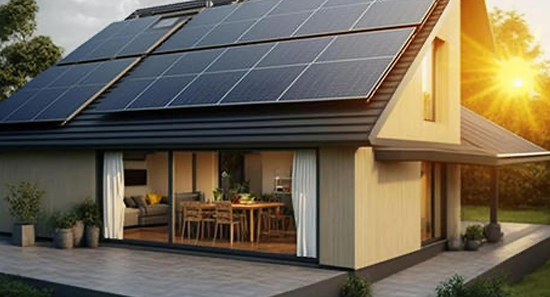Demand Response Programs
Your participation in a Demand Response program helps ease the strain on the grid and benefit the environment. You can also earn financial rewards.

Demand Response Saves You Energy and Money
High summer temperatures can increase the overall demand for energy. Demand Response programs were designed as a way for residential and business customers to help manage the electric demand or amount of energy that is needed in their community.
When your household or business participates in a Demand Response program and reduces your energy use, you’re helping to reduce stress on the energy grid — which can help maintain a reliable grid. You also benefit the environment by helping to defer or reduce the need to construct new power plants and transmission infrastructure and by using cleaner, greener energy. And best of all, you’ll have the opportunity to earn financial incentives.
Support the energy grid, the environment and your community by choosing a Demand Response program that works best for your home or business.
Demand Response for Home
With our Demand Response programs for your home, you can choose when you can conserve energy and earn financial incentives. Residential customers can check out the vampire tool to find appliances that may be wasting energy. Unplug those appliances and save energy in your home.

Emergency Load Reduction Program (ELRP)
Eligible SDG&E customers with battery storage can be compensated for providing energy from their battery during a grid emergency.
Demand Response for Business
Demand Response programs provide financial incentives to businesses that can conserve or shift energy use during times of high demand. Business customers can learn how to prepare to shift energy when temperatures are high, and the grid is stressed by using a few tips.

Capacity Bidding Program (CBP)
Receive a financial incentive if your business meets its goal to reduce energy use on days when conservation is needed.

Emergency Load Reduction Program (ELRP)
Earn a bill credit if your business can reduce energy use during a statewide grid emergency.
Demand Response Programs from Third-Party Providers
Under Electric Rule 32, residential and business customers have the option to participate in Demand Response programs offered by third-party Demand Response Providers (DRP). Third-party DRP entities are responsible for managing their demand response programs, not SDG&E. Questions about demand response programs or services offered by third-party DRPs should be directed to the respective DRP. If you aren't sure which DRP to contact, please use the Demand Response Provider list on the CPUC’s website to locate your DRP.
Critical Peak Pricing Plans
Critical peak pricing plans are available to customers who receive electric generation and delivery from SDG&E. Customers who are enrolled in either Critical Peak Pricing (CPP-D) or Time- of-Use Plus (TOU-P) with event days, should prepare for on-peak and event-day hours (4-9 p.m.) to reduce energy use when an activation is called.
Whether you’re a business or residential customer, your pricing plan can impact your budget. As summer temperatures rise, review your pricing plan to learn when to conserve energy.
Reduce Your Use Event Days affect business and residential customers enrolled in a Time-of-Use pricing plan with Reduce Your Use Event Days.
Critical Peak Pricing Event Days affect business customers enrolled in a Critical Peak pricing plan with Critical Peak Pricing Event Days.
Reduce Your Use (RYU) or Critical Peak Pricing (CPP) Event Days may be called when there is a need for customers to reduce their energy use to help ease strain on the grid.
When an RYU or CPP event day is called, customers enrolled in one of these plans will be asked to conserve energy between 4 p.m. to 9 p.m. Customers who can meet “program-specific” criteria can receive financial incentives; however, if the criteria are not met, customers will be subject to significantly higher rates on these days.
Notifications are sent directly to the contact on file the day ahead of an event. It’s important to review your contact information each season to confirm that the correct person in your home or business is signed up to receive notifications and alerts from SDG&E when event days occur. First sign into MyEnergyCenter.com. Click on your profile name at the top right-hand corner, confirm the contact information list in “My Profile” and then select “Notification Settings.”
Under “Billing and Accounts” update, review and confirm that the contact information on file is correct. From there select your communications preferences and which notifications that you would like to receive.
Also, SDG&E’s home page contains notifications indicating which program's event days have been activated.
Flex Alerts are statewide calls to all customers by the California Independent System Operator (CAISO) for voluntary energy conservation. Flex Alerts can be triggered during heat waves, when more energy is used to stay cool. Sign up to receive Flex Alert Notifications.
A Public Safety Power Shut Off (PSPS) is called by SDG&E during extreme weather or wildfire conditions. As a last resort, there may be a need to turn off power in order to keep communities safe. Sign up to receive Public Safety Power Shutoff notifications.
